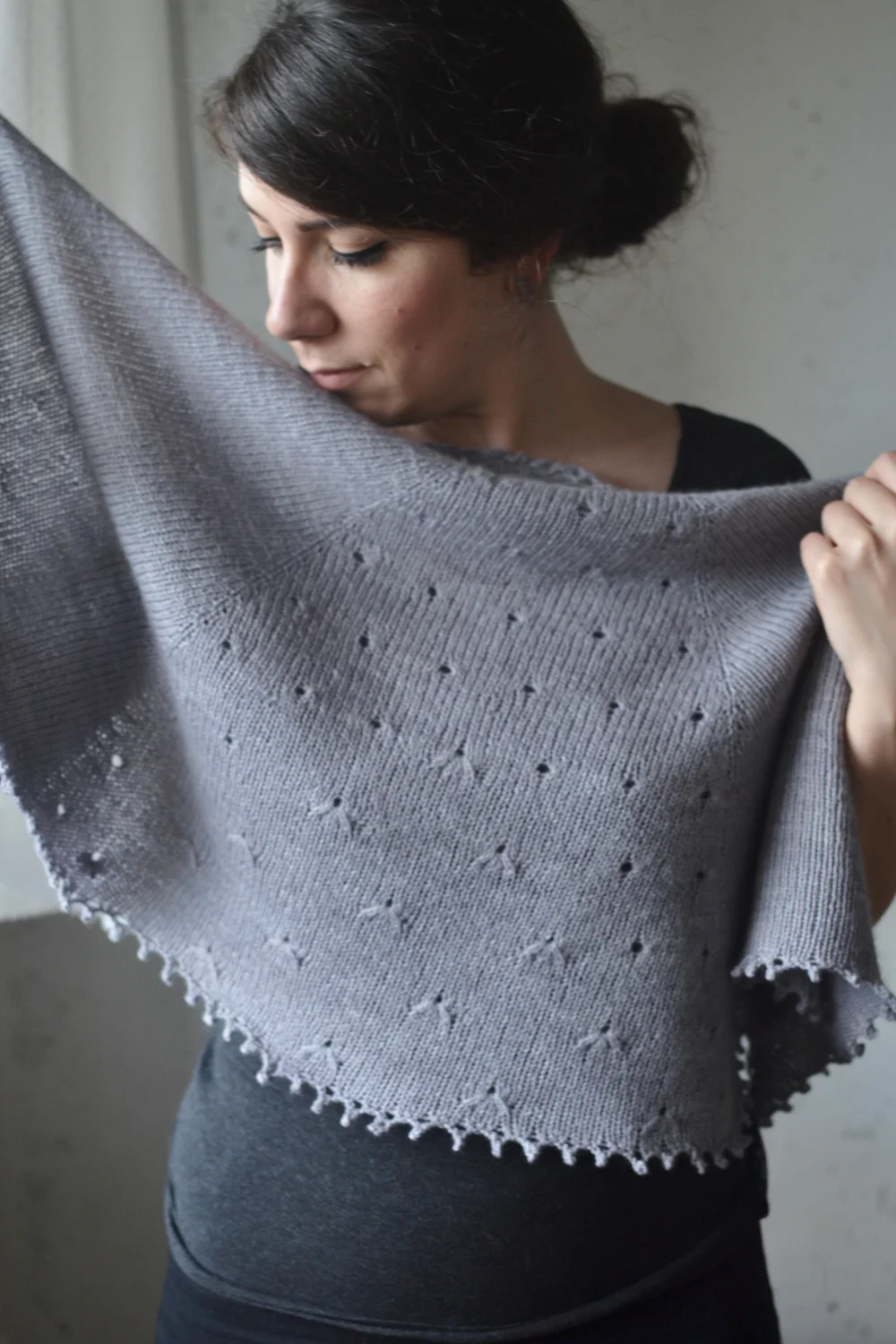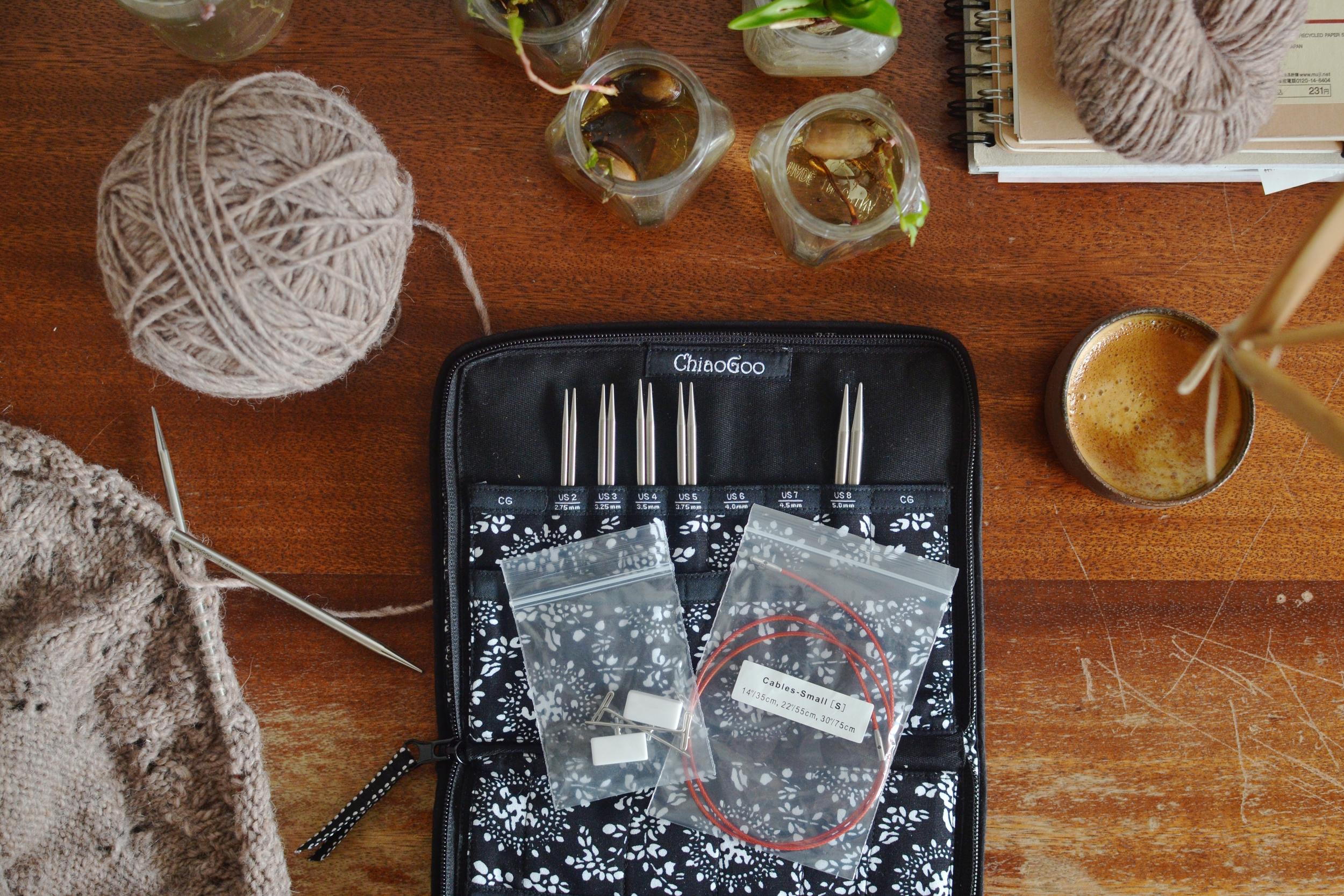Ive heard a lot of good things about blocking wires and more particularly how they can really transform a finished project to give it a very professional look. I've been using T-pins only for as long as I can remember, and as much as I love them, they take so much time to be pinned and a whole lot of them, especially for a large shawl with a picot bind-off. I was curious enough to see how different the same piece would look blocked with T-pins only VS blocking wires, so I took a bunch of pictures of the two blocking methods. The short Lazadas blocking wires set that I have used contains 10 blocking wires (90cm) each and 30 plated T-pins.
In the two pictures on top I used the T-pins only. The shawl was still very wearable, but the picot bind-off had a tendency to roll and the shawl was a little too tight around the neck. I used more than 50 T-pins to block the whole thing, and quite a lot of time to give it the shape that I wanted.
In the bottom pictures, the shawl was blocked with blocking wires and T-pins (less than 20). The blocking wires are extremely flexible and I could bend them to enhance the shawl's circular shape. The finished piece grew by about 20%, giving it a very nice drape, and allowing the flower and eyelet stitches to really pop.
The blocking wires didn't only save me a lot of time, but they genuially transformed the finished piece to an even prettier and more wearable version of the shawl. They will be used for every shawl that needs blocking - Canopy and the Quince&co version of Blóm are next on my list.
The set is very handy as it comes in a little zip pouch that can easily fit in a project bag. The blocking wires are cleaverly looped with wire twist-ties so they don't take a whole lot of space. Just make sure that you keep the wire twist-ties so you can store the blocking wires nicely when you are done!
Oops, and I amlost forgot to mention that they ship worldwide for 5$!










